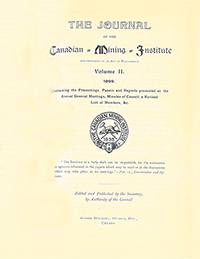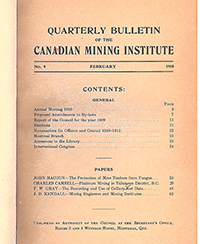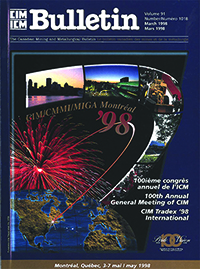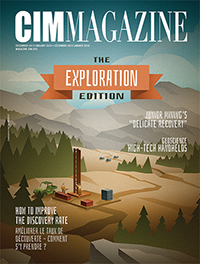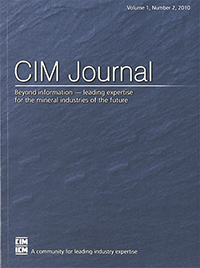Excavating rock after a blast with steam shovel at the Chicago Drainage Canal. Published in the Journal of the Canadian Institute of Mining in 1900.
With the rapid deposit discoveries and technological advances in 19th century Canada, mining men began to form local organizations to provide professionals outlets to discuss their work and to combat legislation considered to be threatening to the mining industry. Provincial mining associations began cropping up in the 1890s, and in 1896, miners from Quebec, Ontario, Nova Scotia, and British Columbia joined together to create the Federated Canadian Mining Institute.
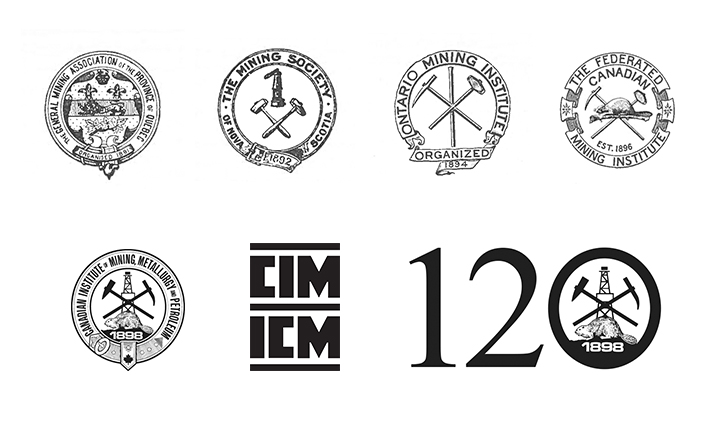
Miners from four provinces came together to establish CIM, which grew and adapted over 120 years to involve people from diverse regions and industries.
That institute lacked the funding necessary to produce the publications it wanted to and had to be reorganized in 1898 as the Canadian Mining Institute (CIM). CIM has always aimed to help create connections between people in the mining industry, and one of the main ways it has done so since its founding is through publications. In 1898, CIM created a circular outlining its objectives, which included “promoting … the economical production of valuable minerals and metals, by means of meetings for the reading and discussion of technical papers, and the subsequent distribution of such information.” In 2018, CIM continues to support the mining industry and facilitate the exchange of ideas through its events and publications.
In 1898, CIM established a mining library made up of more than 125 books and reports, many maps and periodicals from similar societies around the world as well as its own Proceedings, which carried many of the technical papers presented at its meetings. The first annual CIM Journal and Transactions were published in 1898 and included minutes from all CIM meetings that year, the constitution and by-laws, the list of members and technical papers.
In 1899, the library had more than 400 volumes and was being used regularly by CIM’s growing membership. In 1908, CIM produced its first Quarterly Bulletin to publish advance proofs of papers and “other matters of general interest to the membership.” In its first issue, the editor invited members “to make free use of the columns of the Bulletin for the interchange of ideas and suggestions.” Soon after its conception, the Bulletin became a monthly publication and was full of regional mining news and events as well as correspondences from members.
CIM has created and housed many publications throughout its 120-year history, always with the intent of spreading and sharing knowledge among its members and the public.
Over the decades the institute evolved – CIM changed its name to the Canadian Institute of Mining and Metallurgy in 1920 then again to the Canadian Institute of Mining, Metallurgy and Petroleum in 1990. The CIM library was moved to Toronto, moved back to Montreal, and then disbanded, and an online library with tens of thousands of papers was developed. CIM started publishing books commissioned by its societies or relating to the mining industry on a myriad of topics.
The CIM Bulletin increasingly took on a more magazine-like look and approach until in 2006 it was usurped by the CIM Magazine, which still highlights CIM community news and events but also focuses on mining news around the world. Technical papers were not included in CIM Magazine, so in 2010 CIM started publishing its own quarterly journal of peer-reviewed articles on all facets of the mining and metallurgy industries, the CIM Journal.
CIM’s name has changed, but its goals – to facilitate the exchange of expert knowledge and support mining communities – have remained the same since its founding.





